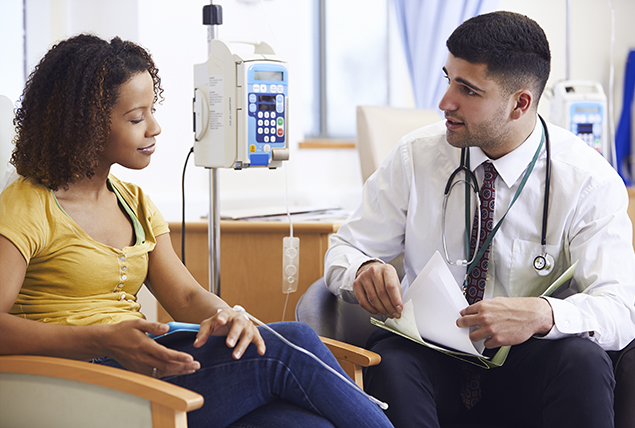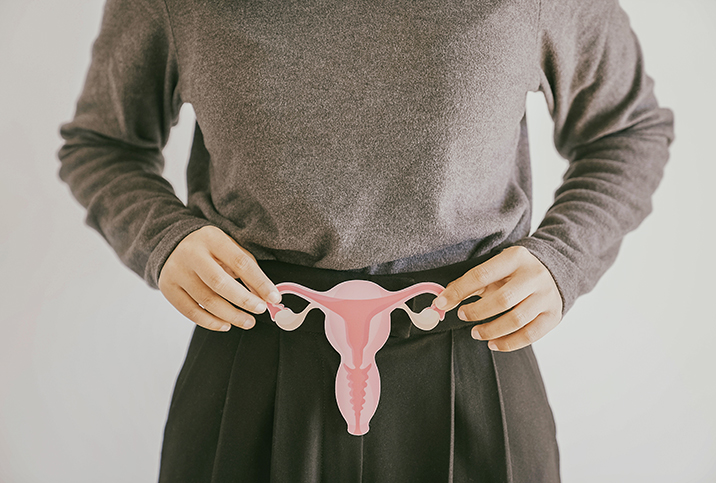How Do You Treat Ovarian Cancer?

Ovarian cancer—a term that encompasses cancers originating among the ovaries, fallopian tubes or the peritoneal cavity—is the second most common gynecologic cancer in the United States.
About 19,710 people will receive a new diagnosis of ovarian cancer in the U.S. in 2023, while about 13,270 will die from the disease, according to estimates from the American Cancer Society (ACS).
Despite being the second most common gynecologic cancer (the first is uterine cancer), ovarian cancer is the deadliest, according to John P. Diaz, chief of gynecologic oncology at the Baptist Health Miami Cancer Institute in Kendall, Florida. This is due to the disease being largely asymptomatic in the early stages and the lack of effective screening methods.
By the time it is discovered, Diaz said, it has often reached a more advanced stage and spread beyond the ovary.
Staying up to date with routine screenings, including annual physicals, abdominal exams and pap smears—while not specifically aimed at detecting ovarian cancer—is vital.
"As a result, the cancer cells may have metastasized to other organs within the abdominal cavity, leading to some of the symptoms patients may experience," Diaz said.
These symptoms may include feeling full early when eating, abdominal and pelvic pain, and changes in your bowel or urinary habits. Still, Diaz said ovarian cancer remains extremely treatable, with about 85 percent of diagnoses that present at an advanced stage entering remission following their primary therapy.
"The treatment of ovarian cancer is best managed by an oncologist with experience in the treatment of this disease," he said. "Survival is based on the stage of diagnosis."
Patients are given a tailored, specific treatment plan based on their genetic factors, the stage of the disease and the genetic makeup of the tumor itself.
Ovarian cancer treatment option No. 1: Surgery
Surgery is typically the most common treatment when it comes to most ovarian cancers. Exactly what kind of surgery and how much, however, is dependent on the specific type of cancer and the stage of diagnosis, Diaz said.
The more the cancer has spread, the more tissue must be removed. Oftentimes, surgery is needed to determine how far the cancer has spread in the first place, which is called "staging."
In addition to determining how far the cancer has spread, the goal of surgery is to remove all visible parts of the disease, Diaz said. This is called debulking.
While removing all visible disease isn’t always possible, the intention is to eliminate all tumors larger than 1 centimeter. When this goal is accomplished, it is called "optimally debulked," and it gives the patient a better outlook than if more of the visible disease is left behind.
Though each case is unique, often the uterus, both ovaries, fallopian tubes and the omentum will be removed during surgery. In certain situations, however—such as if the cancer is only on one ovary and hasn’t spread—one ovary, fallopian tube and the uterus might be left behind so the patient can still potentially bear children in the future.
Ovarian cancer treatment option No. 2: Chemotherapy
Unless ovarian cancer is discovered at a very early stage—which is rare—chemotherapy is recommended in nearly all cases, Diaz said.
Chemo is a form of treatment that uses a cytotoxic agent—meaning it kills cells—to destroy cancer cells. It can be given for a few different reasons, including to eliminate remaining cancer cells following a surgical procedure and to reduce the risks of the cancer returning. Chemo can be given to shrink an ovarian tumor ahead of surgery or to help manage pain and symptoms in extremely advanced cases.
Chemotherapy can either be administered directly into a vein through an IV, or can be given by intraperitoneal (IP) chemotherapy. In the latter case, the drugs are delivered through a port directly into the abdomen.
In both cases, chemo is typically a systemic therapy, meaning the drugs move throughout the bloodstream to find and kill cancer cells, including those that have spread to other organs beyond the initial tumor site.
In addition to destroying cancer cells, chemo can kill healthy cells in the process and result in a number of possible side effects, including but not limited to: hair loss, nausea and vomiting, fatigue, loss of appetite, sore throat and mouth and fertility problems.
How do you prevent ovarian cancer?
"There is no effective screening for ovarian cancer," Diaz said. "However, there are some factors that can decrease the risk of developing this disease."
Genetic testing is one option to determine if you're at an increased risk of developing ovarian cancer. Mutations in the breast cancer susceptibility genes BRCA1 and BRCA2 and gene mutations associated with Lynch Syndrome, for example, may lead to an increased risk.
"Risk-reducing surgery, such as removal of the ovaries and fallopian tubes, can decrease the risk and may be recommended for some women who are at increased risk," Diaz said.
The use of oral contraceptives for more than five years can decrease the risk of developing ovarian cancer by up to 50 percent, Diaz said. Tubal ligation (also known as having your tubes tied), parity (how many times you’ve given birth) and breastfeeding might also reduce risk.
Staying up to date with routine screenings, including annual physicals, abdominal exams and pap smears—while not specifically aimed at detecting ovarian cancer—is vital. Be sure to speak with your health care provider if you experience any of the above symptoms.


















